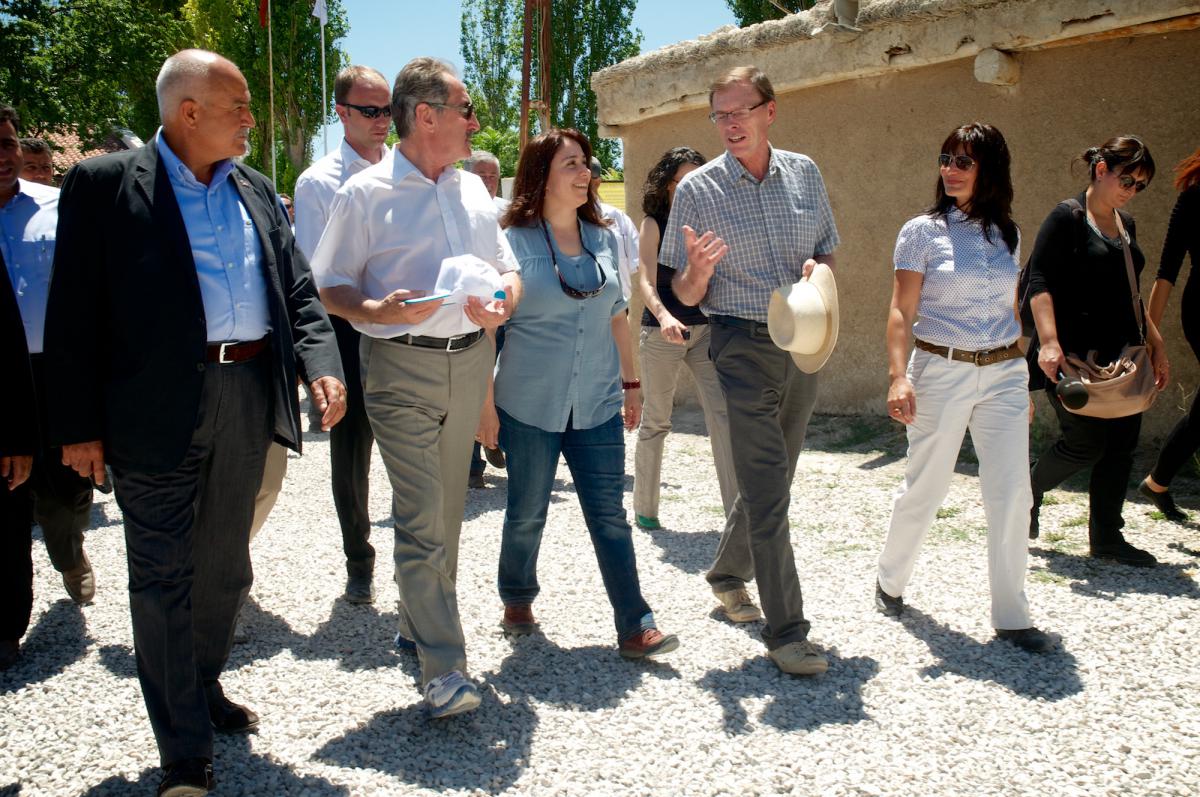Partners

The project is sustained by a number of important sponsors, research institutions and other contributing partners. These supporters make possible our work on site, online, and at specialist research facilities around the world.
You can learn more about our various partners by exploring Sponsors, Collaborating Universities and Institutions, and the John Templeton Foundation.
Sponsors
Collaborators
The Çatalhöyük Research Project is an international, multi-institution collaboration. Since 1993, we have benefited from the support and investment of many organisations and affiliated researchers and cultural specialists.
Today we partner with upwards of a dozen institutions to excavate, analyse and interpret Çatalhöyük.
John Templeton Foundation
The Templeton Foundation has generously funded four phases of research into the role of religion in the emergence of complex societies, with particular reference to Çatalhöyük. Details of these projects are outlined below.
Spirituality and Religious Ritual in the Emergence of Civilization: Çatalhöyük as a Case Study (ID#12021), 2006-2009: This research, published in Hodder (2010), established that archaeologists can identify religious behaviours in the early Middle East and that changes in such behaviours have been intimately tied to the emergence of large settled agricultural towns. A link was identified between history making, place making and concentrations of religious symbolism and activity in ‘history houses’. In other words, at Çatalhöyük, and at other early sites in the Middle East, there is evidence that houses were often built on top of each other and links were made to those buried in earlier houses. At the 9th millennium BC site of Göbekli in southeast Turkey the ‘temples’ were rebuilt and refurbished in the same place around ancestral stele. At Çatalhöyük some houses were lived in over generations and were rebuilt many times; such houses also had concentrations of burials and greater symbolic elaboration and ritual accoutrements. These particular places of burial and ritual (history houses) created long-term relationships between the many individuals who used them.
Religion as the Basis for Power and Property in the First Civilizations: The Analysis and Publication of Çatalhöyük (ID#13463), 2009-2012: This research aimed to investigate whether the true founders of civil society in the Middle East were those who controlled religion, religious objects and their histories. The answer, published in 5 publications, including Hodder (2014), has been surprising. Very clearly in early Çatalhöyük the control of religion in history houses was not linked to social and economic dominance. Rather, evidence from other early sites in the Middle East suggests collective involvement in ritual, often without sustained social ranking. So it seems that religion and ritual were important in creating long-term relationships in place without at the same time producing elites that controlled production and exchange.
The Primary Role of Religion in the Origin of Settled Life: The Evidence from Çatalhöyük and the Middle East (ID#22893), 2012-2014: If the primary function of religion was not to create social differentiation, what was its role? The answer to this question lies in the relationship that has been identified between religion and history. As humans settled down they became entangled in the longer-term relationships that are the hallmark of agricultural societies. These longer-term relationships were tied to place as humans tended crops and reaped harvests. Renfrew, Woodburn and Fuller are amongst those who have argued that the greater engagement with material culture produced by or transformed by humans (nets, boats, tools, weapons, houses, fields, domesticated animals and crops) in the early Holocene tied people to each other and to places. There were longer periods between the investment of labour and reaping the rewards of labour. There was a need to hold society together as investments were returned and as products were amassed, stored and distributed. The societies that were produced were more historical (in the sense that links between members of society through time became important) and place-bound (in the sense that many of the new technologies such as storage, domesticates and equipment inhibited movement).
Consciousness and Creativity at the Dawn of Settled Life: The Test-Case of Çatalhöyük (ID#52003), 2015-2017: Here we address the relationships between the origins of settled agricultural life and cognitive change. The unprecedented volume of data from the site will be used to test a series of claims made by authors including the Jesuit priest Teilhard de Chardin, Colin Renfrew, and Jacques Cauvin, about the Neolithic as a key moment in the gradual process by which human consciousness, an awareness of an integrated personal self, and the horizons of human possibility (innovation and creativity) all increased. Through empirical archaeological research, the project will test competing expectations about the timing and causes of these changes. This project aims to make a difference by showing that rich and scientifically collected archaeological data can be used to test hypotheses about how we evolved cognitively—showing that the Neolithic was a key moment in the gradual forging of the modern mind.
For more information on these projects see, in particular:
Hodder, I. (ed) 2010. Religion in the emergence of civilization. Çatalhöyük as a case study. Cambridge: Cambridge University Press.
Hodder, I. (ed) 2014. Religion at work in a Neolithic society: vital matters. Cambridge: Cambridge University Press.




